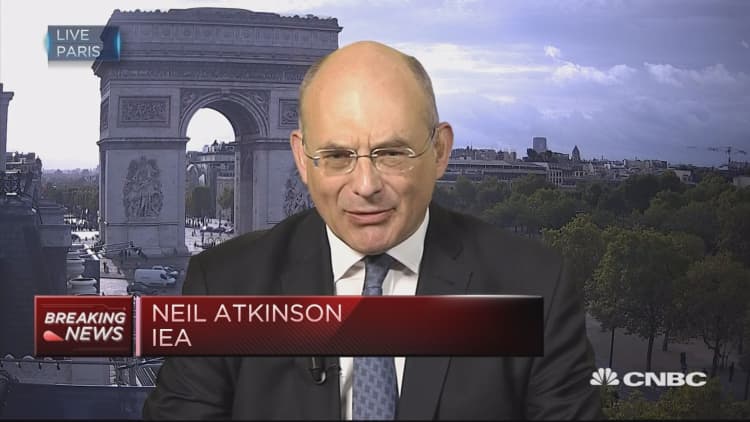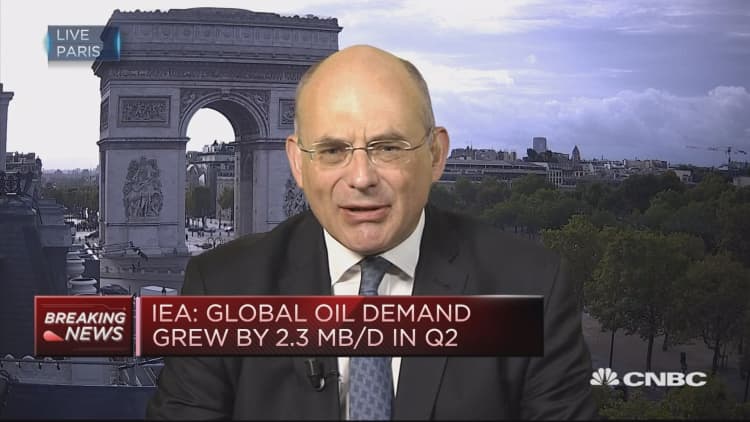
Global oil demand is set to accelerate faster than anticipated this year, according to the International Energy Agency (IEA), which has revised up its 2017 growth estimates.
Strong second-quarter demand has buoyed oil markets, which have been struggling to rebalance as a supply glut has weighed heavily on prices, the IEA said in its September report released Wednesday.
Demand grew by 2.3 million barrels per day (mb/d), or 2.4 percent, in the second quarter of 2017, prompting the Paris-based organization to increase its growth estimate for the year to 1.6 mb/d, or 1.7 percent. For 2018, the IEA is predicting growth of 1.4 mb/d, or 1.4 percent.
The revision marks an uptick from its August forecasts as the IEA grows more confident that shifting fundamentals are enabling demand to catch up with supply. In August, the IEA has anticipated annual growth would hit 1.5 mb/d, again an increase on July's 1.4 mb/d forecast.
Neil Atkinson, head the IEA's oil industry and markets division, told CNBC that "pretty robust" demand indicated that a rebalancing of the market is "underway."
It comes as global oil supplies fell in August due to both multilateral measures aimed at stemming excess stock and unplanned outages.
OPEC output fell in August for the first time in five months, after turmoil in Libya disrupted flows and other member countries reduced production. Compliance levels in August hit 82 percent compared with 75 percent.
The data will buoy signatories who implemented the deal in January in a bid to boost oil prices but have since struggled to cap supply amid increased output from member states Libya and Nigeria. The organization is currently discussing an extension to the deal.
"There are lots of indicators on the dashboard which point to the fact that stocks are falling," Atkinson said, also referencing falling ship reserves and reduced output by OECD economies, where production has dropped to five-year averages.

Supply is also said to have been hampered by Hurricane Harvey in the U.S., which caused refineries to shut. The storm is estimated to have shut in roughly 200,000 barrels per day of production in August, with a further 300,000 barrels per day expected to be lost in September. However, Atkinson said the dip was unlikely to have "lasting impact."
Overall, global supply fell by 720,000 barrels per day in August.
Atkinson said that this shift in output had already been reflected by markets, which quickly recovered from the impact of extreme weather and is now in backwardation. This means that the spot price of oil stocks is higher than the forward price.
"After the dust has settled from the hurricanes, we've seen Brent prices rise in last week or so. And crucially the market is in backwardation, although it's only a very shallow one.
"That's a signal that the market is tightening and perhaps firmer prices are on the way," Atkinson noted, though he wouldn't forecast specific price levels.
Brent oil traded at $54.39 per barrel Wednesday morning, while WTI was at $48.31.


